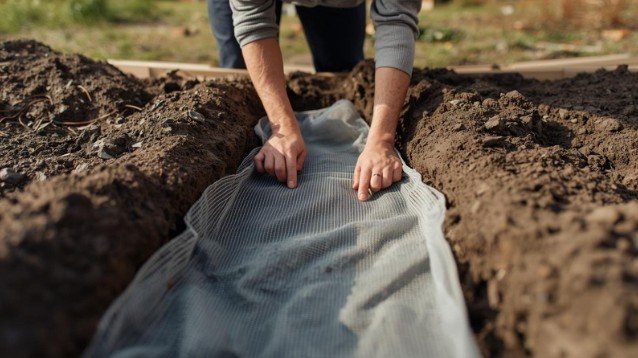
I still remember the morning I walked outside, coffee in hand, and spotted what looked like a tiny underground roller coaster running across my lawn. I had never seen tunnels like that, and I instantly panicked. My yard looked like a mole city. That moment pushed me to learn everything about how to get rid of moles from the garden, and after way too much trial and error, I finally figured out what works, what doesn’t, and how to regain control without tearing up the entire yard.
I learned that moles don’t follow the rules. They show up where they want, they tunnel fast, and they never leave politely. But with the right mix of trapping, repellents, barriers, and smart lawn care, you can take back your garden in a way that feels doable—not overwhelming.
What Actually Works When You Want to Get Rid of Moles from the Garden?

I started with guesswork, because I trusted every neighbor who claimed they had “the secret.” Spoiler: half of those tricks didn’t work. But trapping absolutely worked, and experts agree that it gives you the highest success rate.
I learned to spot active tunnels by flattening sections of raised soil early in the morning. When I checked back 24–48 hours later, the active tunnels puffed back up like the moles wanted to leave me a message. Those runways turned into my trapping points.
You can use scissor traps, harpoon traps, or live pit-style traps. Scissor and harpoon traps deliver strong results when you place them correctly. Live traps require more patience, plus you must follow local wildlife laws.
When I struggled with placement, calling a wildlife control professional saved me days of frustration. Sometimes a pro just gets it right the first try.
Do Repellents Actually Help, or Are They Just Wishful Thinking?

I always felt skeptical about repellents until I tried castor oil products. Moles hate the smell and taste of castor oil, so repellents with castor oil help push them away instead of inviting them deeper into your yard. I sprinkled granular repellent across the lawn and watered it in, and I actually noticed fewer fresh tunnels afterward.
Garlic bulbs and coffee grounds also help as natural deterrents. When I dropped crushed garlic near the tunnel openings, the smell alone made me back up—so I understood why the moles disliked it.
Sonic or vibration spikes look cool but don’t let the aesthetic fool you. Moles often get used to the noise and keep digging. I wasted money on those, so you don’t have to.
Here’s a quick comparison table based on my experience:
| Method | Effectiveness | Notes |
| Trapping | Very High | Fastest and most reliable when done correctly |
| Castor Oil Repellent | High | Great for pushing moles out of active areas |
| Garlic/Coffee Grounds | Moderate | Works as a mild deterrent |
| Sonic Devices | Low | Moles often ignore them |
| Food Source Removal | Low–Medium | Reducing grubs helps, but moles still eat worms |
Can Physical Barriers Really Keep Moles Out?

When I added raised beds to my garden, I finally tried physical barriers. I buried hardware cloth about 12 inches deep and bent the bottom outward like an L-shape. That simple change turned my raised beds into a mole-free zone.
Underground fencing works especially well when you build new beds, plant expensive flowers, or protect veggie patches. It doesn’t help as much with an entire lawn unless you want a huge project, but for targeted problem zones, it feels like a genius solution.
Some gardeners swear by mole-repelling plants like marigolds, alliums, daffodils, and caper spurge. I noticed mixed results. They don’t keep moles away by themselves, but they add beauty and might contribute to a less inviting environment. I treat them as a bonus strategy, not the main one.
Watering less frequently also helps. Moles love moist soil packed with worms, so switching to one deep watering per week can make your lawn less appealing.

How to Get Rid of Moles: Step-by-Step Guide
When I finally built a routine, I realized that mole control doesn’t need to feel chaotic. It just needs structure and consistency.
I start by walking my lawn and flattening every raised tunnel I see. I mark those areas and return the next day to check which ones rise back up. Those active tunnels become my focus. I place my traps carefully in those straight, active runs so the mole meets the trap directly while moving through.
Once I set the traps, I add castor oil repellent around the garden perimeter to guide the moles outward instead of inward. For sensitive areas like flower beds, I reinforce the edges with buried hardware cloth. This combination of trapping and pushing them away reduces new tunnel formation significantly.
I check traps daily, because humane practice matters to me. When I catch a mole, I reset the trap or move it to another active tunnel if new activity shows up. If the situation feels too big or stressful, I don’t hesitate to call a wildlife professional. Sometimes handing the job to an expert saves you time, money, and sanity.
FAQ: Real Questions Gardeners Always Ask
1. Do moles damage plants?
Moles don’t eat plants, but they disrupt root systems while tunneling. Your flowers might tilt, and your lawn may look uneven. The damage comes from the tunnels—not the mole’s diet. Their digging can also invite voles, which do eat plants.
2. Do I need to get rid of all the grubs?
Reducing grubs helps, but it won’t stop moles completely because they mainly eat earthworms. You can treat for grubs to reduce soil activity, but don’t rely on this method alone. Combine grub control with trapping or repellents for better results.
3. Are poison baits safe for pets and wildlife?
I avoid poison baits because they create too much risk. Pets and wild animals can ingest them or catch poisoned moles. Non-target harm isn’t worth the gamble when safer, more effective options exist.
4. How long does it take to get rid of moles?
When you use trapping as your main method, you often see results within a few days to a week. Repellents can push moles out gradually over a couple of weeks. A combination of trapping plus deterrents usually gives the fastest outcome.
Alright, Mole—You’ve Met Your Match
I treated mole control like a game of strategy, and once I stopped relying on gimmicks, everything clicked. You can reclaim your lawn with trapping, smart repellents, and well-placed barriers. When you follow consistent steps, you stop feeling like the moles run your yard and start feeling like you run the show.
My final tip: stay patient. Moles move fast, but your plan works when you stick with it. Your garden deserves that victory moment when the tunnels stop appearing—and trust me, that moment feels amazing.





